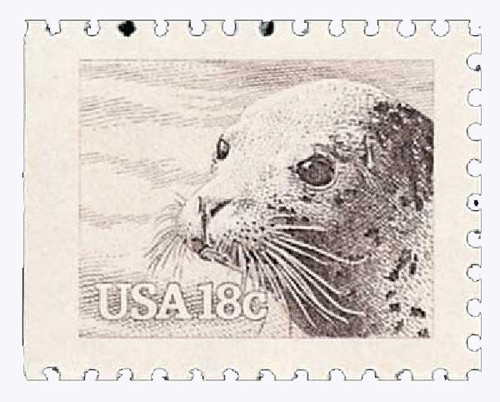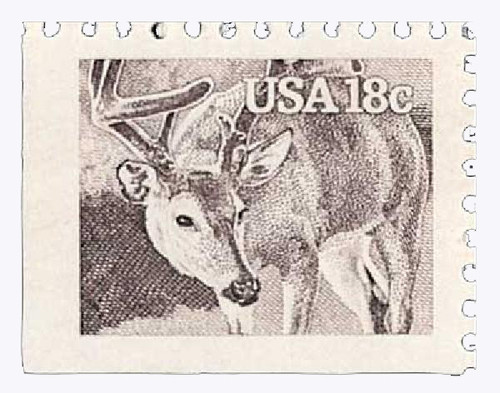
1981 18c Wildlife of America
# 1880-89 FDC - 1981 18c Wildlife of America
$9.00 - $28.95
U.S. #1880-89
1981 18¢ Wildlife of America
1981 18¢ Wildlife of America
Issue Date: May 14, 1981
City: Boise, Idaho
Quantity: Unknown
City: Boise, Idaho
Quantity: Unknown
Printed By: Bureau of Engraving and Printing
Printing Method: Engraved
Perforations: 11
Color: Dark brown
Since 1869, when a horse and two eagles appeared on the pictorial issues, America’s wildlife has become a popular topic for U.S. postage. Today, over 200 stamps picture mammals, birds, insects, and fish. However, it wasn’t until the Postal Service issued the wildlife booklet that any of the stamps focused on endangered species.
During the past 2,000 years, the world has lost over 100 species of mammals alone and two thirds of these losses have occurred since the mid-1800s. In addition to those that are already extinct, many are slowly vanishing. Alarmed by the potential of man’s power to destroy the earth’s wildlife, pioneer conservationists began to take action. Believing they had a responsibility to conserve natural resources for future generations, they established sanctuaries and wrote laws to regulate hunting.
Today, numerous sanctuaries, also called preserves, reserves, and refuges provide protection and space needed for large predators and grass-dwelling herds. The Endangered Species Act makes it illegal to hunt, trap, or collect those species which are threatened with extinction and also restricts the use of government funds for projects which will adversely affect their environment.
At one time, the animals pictured on these stamps freely roamed throughout North America. However, unrestricted hunting pushed their populations to near extinction. Many, though, like the white-tailed deer, have been restored through conservation efforts.
U.S. #1880-89
1981 18¢ Wildlife of America
1981 18¢ Wildlife of America
Issue Date: May 14, 1981
City: Boise, Idaho
Quantity: Unknown
City: Boise, Idaho
Quantity: Unknown
Printed By: Bureau of Engraving and Printing
Printing Method: Engraved
Perforations: 11
Color: Dark brown
Since 1869, when a horse and two eagles appeared on the pictorial issues, America’s wildlife has become a popular topic for U.S. postage. Today, over 200 stamps picture mammals, birds, insects, and fish. However, it wasn’t until the Postal Service issued the wildlife booklet that any of the stamps focused on endangered species.
During the past 2,000 years, the world has lost over 100 species of mammals alone and two thirds of these losses have occurred since the mid-1800s. In addition to those that are already extinct, many are slowly vanishing. Alarmed by the potential of man’s power to destroy the earth’s wildlife, pioneer conservationists began to take action. Believing they had a responsibility to conserve natural resources for future generations, they established sanctuaries and wrote laws to regulate hunting.
Today, numerous sanctuaries, also called preserves, reserves, and refuges provide protection and space needed for large predators and grass-dwelling herds. The Endangered Species Act makes it illegal to hunt, trap, or collect those species which are threatened with extinction and also restricts the use of government funds for projects which will adversely affect their environment.
At one time, the animals pictured on these stamps freely roamed throughout North America. However, unrestricted hunting pushed their populations to near extinction. Many, though, like the white-tailed deer, have been restored through conservation efforts.
















